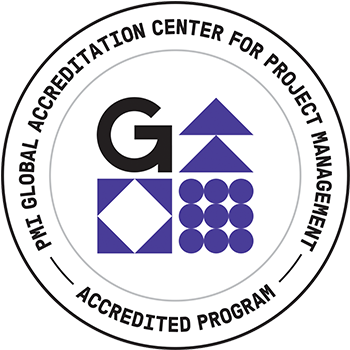
Presentation: Replacing ANSI 748 with a TESTED and PROVEN EVM System that has been in Use for 120+ Years
Abstract: Two important papers, “It’s Time to “Reboot” Earned Value Management” (Abba, Wayne, 2023) and “Planning for the Future of Earned Value Management,” (Reynolds, Chad 2023) were recently published in the March issue of the Defense Acquisition University’s (DAU) blog. (Have since been removed for whatever reasons?)
In these well-written, well-documented papers, the authors summarized many years of relatively recent experience, both their own and that of others, telling us what, as taxpayers, we all knew intuitively, and that is “Earned Value Management” at least as practiced under ANSI 748 C or D has not worked, at least in the context of measuring and validating “value for money” by the US Governments stewardship of taxpayer funds. Specifically, one author posited that:
“Program leaders need to stop the bleeding and redirect budget resources when EVM analysis shows that progress is too slow, too expensive, and fails to meet performance goals or provide timely, reliable information.” (Wayne Abba)
“This is a fundamental change in emphasis. The audit-like DoD compliance process is sclerotic. It is implemented by external specialists who lack detailed knowledge of the project and have no stake in the outcome.”( Wayne Abba)
When someone with the gravitas of Abba and Reynolds and others from the DAU tells us it is time to rethink Applied Earned Value Management, don’t you think we need to take his advice seriously?
As an undergrad at Worcester Polytechnic Institute during the late 1960s-early 1970s, I was taught by Adjunct Professor, Marvin Gates, PE an Earned Value Management System that originated during the 16th Century Guilds as a “Cash on Delivery” system that evolved and was refined during the 18th Century Industrial Revolution by Frederick Taylor, Henri Fayol, Henry Gantt, Frank and Lillian Gilbreth, et al and documented by Halbert Powers Gillette, and Richard Turner Dana in their 1909 book “Cost Keeping and Management Engineering: A Treatise for Engineers, Contractors and Superintendents Engaged in the Management of Engineering Construction”, producing a simple yet very powerful EVM SYSTEM based on “common sense” that has proven to work so effectively at protecting the interests of both the SELLER and the BUYER, it is still in pervasive use today by the private sector.
For 50+ years we have been using this EVM System as both OWNERS (Developers) and CONTRACTORS (Consultants) and have been teaching this to our clients with measurable positive outcomes in terms of cost reductions and increases in productivity.
This paper will provide a Step-by-Step instruction to set this system up using nothing more than Excel, including the use of the Artificial Intelligence (AI) features in Excel, including 3 Sigma Statistical Process Control Charts and the “best fit” curve features in Excel.
At the completion, the Excel Templates will be provided to anyone who wants to see how to set it up.
This TESTED and PROVEN EVM Method has been set up to report at the:
- Program
- Individual Project
- Team Members (Different Subcontractors)
- Individual Employees
PMI Talent Triangle: Business Acumen
Biography: Dr. Paul D. Giammalvo, CDT, CCE (#1240), MScPM, MRICS, is a Senior Technical Advisor (Project Management) to PT Mitratata Citragraha. (PTMC), Jakarta, Indonesia. www.build-project-management-competency.com. He is noted for the development and delivery of graduate level, blended learning curricula designed for the mid-career path, English as Second Language (ESL) professionals to develop competency in the local practitioner and build capacity for the local organizations. For 25+ years, he has been developing and delivering Project Management training and consulting throughout South and Eastern Asia Pacific, the Middle East, West Africa, and Europe.
He is also active in the Global Project Management Community, by playing a “thought leadership” role for the Association for the Advancement of Cost Engineering International, (AACEI) http://www.aacei.org/ since 1991; He has also been active in two IPMA member organizations: The Green Project Management Association (GPM) http://www.greenprojectmanagement.org/ where he served on the Certification Board of Directors for two years and the American Society for the Advancement of Project Management http://www.asapm.org/ for which he served for four years on the BoD as Director of Marketing. He also sat on the Board of Directors of the Global Alliance for Project Performance Standards (GAPPS), www.globalpmstandards.org, Sydney, Australia and is active as a regional leader. Currently, he is a compensated consultant to the International Guild of Project Controls. http://www.planningplanet.com/guild as the primary author of their “Compendium and Reference” as well as the chief architect of their competency-based credentialing program. http://www.planningplanet.com/guild/certification
He has spent 35 of the last 50 years working on large, highly technical international projects, including such prestigious projects as the Alyeska Pipeline and the Distant Early Warning Site (DEW Line), upgrades in Alaska and the Negev Airbase Constructors, Ovda, Israel and the Minas Oil Field in Rumbai, Sumatra. His current client list includes Fortune 500 major telecommunications, oil, gas and mining companies plus the UN Projects Office and many other multi-national companies, NGO organizations and Indonesian Government Agencies.
In addition to 45+ years of hands-on field experience, Dr. Giammalvo holds an undergraduate degree in Construction Management, his Master of Science in Project Management through the George Washington University and was awarded his PhD in Project and Program Management through the Institute Superieur De Gestion Industrielle (ISGI) and Ecole Superieure De Commerce De Lille (ESC-Lille) under the supervision of Professor Christophe Bredillet.
Paul can be contacted at pauldgphd@gmail.com.

